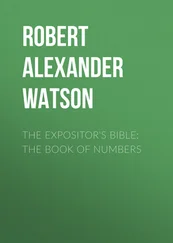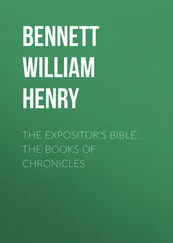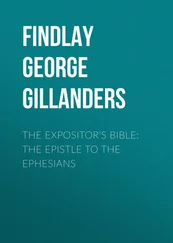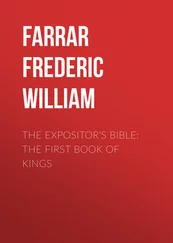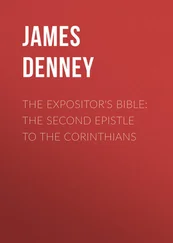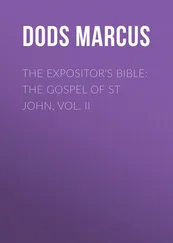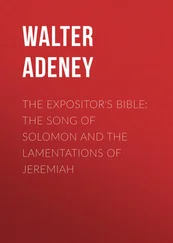John Gibson - Expositor's Bible - The Gospel of Matthew
Здесь есть возможность читать онлайн «John Gibson - Expositor's Bible - The Gospel of Matthew» — ознакомительный отрывок электронной книги совершенно бесплатно, а после прочтения отрывка купить полную версию. В некоторых случаях можно слушать аудио, скачать через торрент в формате fb2 и присутствует краткое содержание. Издательство: Иностранный паблик, Жанр: foreign_religion, foreign_antique, foreign_prose, на английском языке. Описание произведения, (предисловие) а так же отзывы посетителей доступны на портале библиотеки ЛибКат.
- Название:Expositor's Bible: The Gospel of Matthew
- Автор:
- Издательство:Иностранный паблик
- Жанр:
- Год:неизвестен
- ISBN:нет данных
- Рейтинг книги:5 / 5. Голосов: 1
-
Избранное:Добавить в избранное
- Отзывы:
-
Ваша оценка:
- 100
- 1
- 2
- 3
- 4
- 5
Expositor's Bible: The Gospel of Matthew: краткое содержание, описание и аннотация
Предлагаем к чтению аннотацию, описание, краткое содержание или предисловие (зависит от того, что написал сам автор книги «Expositor's Bible: The Gospel of Matthew»). Если вы не нашли необходимую информацию о книге — напишите в комментариях, мы постараемся отыскать её.
Expositor's Bible: The Gospel of Matthew — читать онлайн ознакомительный отрывок
Ниже представлен текст книги, разбитый по страницам. Система сохранения места последней прочитанной страницы, позволяет с удобством читать онлайн бесплатно книгу «Expositor's Bible: The Gospel of Matthew», без необходимости каждый раз заново искать на чём Вы остановились. Поставьте закладку, и сможете в любой момент перейти на страницу, на которой закончили чтение.
Интервал:
Закладка:
As the name Joshua, or Jesus, came from the earliest times of Israel's national history, the name Emmanuel came from its latest, even out of the dark days of King Ahaz, when the hope of the people was directed to the birth of a Child who should bear this name. Some have thought it enough to show that there was a fulfilment of this hope in the time of Ahaz, to make it evident that St. Matthew was mistaken in finding its fulfilment in Christ; but this idea, like so many others of the same kind, is founded on ignorance of the relation of the Old Testament history to the New Testament times. We have seen that though Joshua of the early times and his successor of the same name did each a work of his own, yet both of them were in relation to the future but prototypes of the Great Joshua who was to come. In the same way exactly, if there was, as we believe, a deliverance in the time of Ahaz, to which the prophet primarily referred, it was, as in so many other cases, but a picture of the greater one in which the gracious purpose of God, manifested in all these partial deliverances, was to be "fulfilled," i. e. , filled to the full. The idea in the name "Emmanuel" was not a new one even in the time of King Ahaz. "I will be with you;" "Certainly I will be with you;" "Fear not, for I am with you," – such words of gracious promise had been echoed and re-echoed all down the course of the history of the people of God, before they were enshrined in the name prophetically used by Isaiah in the days of King Ahaz; and they were finally embodied, incarnated, in the Child born at Bethlehem in the fulness of the time, to Whom especially belongs that name of highest hope, "Emmanuel," "God with us."
If, now, we look at these two names, we shall see that they not only point to a fulfilment, in the largest sense, of Old Testament prophecy, but to the fulfilment of that which we all need most – the satisfaction of our deepest wants and longings. "God is light;" sin is darkness. With God is the fountain of life; "sin when it is finished bringeth forth death." Here shines the star of hope; there lies the abyss of despair. Now, without Christ we are tied to sin, separated from God. Sin is near; God is far. That is our curse. Therefore what we need is God brought near and sin taken away – the very blessings guaranteed in these two precious names of our Lord. As Emmanuel, He brings God near to us, near in His own incarnate person, near in His loving life, near in His perfect sympathy, near in His perpetual presence according to the promise, "Lo, I am with you alway, even unto the end of the world." As Jesus, He saves us from our sins. How he does it is set forth in the sequel of the Gospel, culminating in the sacrifice of the cross, "to finish the transgression, and to make an end of sins, and to make reconciliation for iniquity, and to bring in everlasting righteousness." For He has not only to bring God down to us, but also to lift us up to God; and while the incarnation effects the one, the atonement, followed by the work of the Holy Spirit, is necessary to secure the other. He touches man, the creature, at his cradle; He reaches down to man, the sinner, at His cross – the end of His descent to us, the beginning of our ascent with Him to God. There we meet Him; and saved from sin, we know Him as our Jesus; and reconciled to God, we have Him with us as Emmanuel, God with us, always with us, with us throughout all life's changes, with us in death's agony, with us in the life to come, to guide us into all its wisdom and honour and riches and glory and blessing.
II.
HIS RECEPTION
THIS one chapter contains all that St. Matthew records of the Infancy. St. Mark and St. John tell us nothing, and St. Luke very little. This singular reticence has often been remarked upon, and it certainly is most noteworthy, and a manifest sign of genuineness and truthfulness: a token that what these men wrote was in the deepest sense not their own. For if they had been left to themselves in the performance of the task assigned them, they could not have restrained themselves as they have done. The Jews of the time attached the greatest importance to child-life, as is evident from the single fact that they had no less than eight different words to mark the successive stages of development from the new-born babe up to the young man; and to omit all reference to these stages, except the slight notice of the Infancy in this chapter, was certainly not "according to Matthew" the Jew, – not what would have been expected of him had he been left to himself. It can only be explained by the fact that he spoke or was silent according as he was moved or restrained by the Holy Ghost. This view is strikingly confirmed by comparison with the spurious Gospels afterwards published, by men who thought they could improve on the original records with their childish stories as to what the boy Jesus said and did. These awkward fictions reflect the spirit of the age; the simple records of the four Evangelists mirror for us the Spirit of Truth. To the vulgar mind, they may seem bare and defective, but all men of culture and mature judgment recognise in their simplicity and naturalness a note of manifest superiority.
Much space might be occupied in setting forth the advantages of this reticence, but a single illustration may suggest the main thought. Recall for a moment the well-known picture entitled, "The Shadow of the Cross," designed and executed by a master, one who might surely be considered qualified to illustrate in detail the life at Nazareth. We have nothing to say as to the merit of the picture as a work of art; let those specially qualified to judge speak of this; but is it not generally felt that the realism of the carpenter's shop is most painful? The eye is instinctively averted from the too obtrusive details; while the mind gladly returns from the startling vividness of the picture to the vague impressions made on us by the mere hints in the sacred Scriptures. Was it not well that our blessed Saviour should grow in retirement and seclusion; and if so, why should that seclusion be invaded? If His family life was withdrawn from the eyes of the men of that time, there remains the same reason why it should be withdrawn from the eyes of the men of all time; and the more we think of it, the more we realize that it is better in every way that the veil should have been dropped just where it has been, and that all should remain just as it was, when with unconscious skill the sacred artists finished their perfect sketches of the child Jesus.
Perhaps, however, the question may be asked: If St. Matthew would tell us so little, why say anything at all? What was his object in relating just what he has set down in this chapter? We believe it must have been to show how Christ was received. It seems, in fact, to correspond to that single sentence in the fourth Gospel, "He came unto His own, and His own received Him not;" only St. Matthew gives us a wider and brighter view; he shows us not only how Jerusalem rejected Him, but how the East welcomed Him and Egypt sheltered Him. Throughout the entire Old Testament our attention is called, not merely to Jerusalem, which occupied the centre of the ancient world, but to the kingdoms round about, especially to the great empires of the East and South – the empire of the East represented in succession by Ancient Chaldea, Assyria, Babylonia, Media, and Persia; and that of the South – the mighty monarchy of Egypt, which under its thirty dynasties held on its steady course alongside these. How natural, then, for the Evangelist whose special mission it was to connect the old with the new, to take the opportunity of showing that, while His own Jerusalem rejected her Messiah, her old rivals of the East and of the South gave Him a welcome. In the first chapter the Child Jesus was set forth as the Heir of the promise made to Abraham and his seed, and the fulfilment of the prophecy given to the chosen people; now He is further set forth as the One who satisfies the longings of those whom they had been taught to regard as their natural enemies, but who now must be looked upon as "fellow-heirs" with them of God's heritage, and "partakers of His promise in Christ by the Gospel." It will be seen, then, how the second chapter was needed to complete the first, and how the two together give us just such a view of the Advent as was most needed by the Jews of the period, while it is most instructive and suggestive to men of all countries and of all time. As, then, the last paragraph began with, "Now the birth of Jesus Christ was on this wise," we may regard this as beginning with, "Now the reception of Jesus Christ was on this wise."
Читать дальшеИнтервал:
Закладка:
Похожие книги на «Expositor's Bible: The Gospel of Matthew»
Представляем Вашему вниманию похожие книги на «Expositor's Bible: The Gospel of Matthew» списком для выбора. Мы отобрали схожую по названию и смыслу литературу в надежде предоставить читателям больше вариантов отыскать новые, интересные, ещё непрочитанные произведения.
Обсуждение, отзывы о книге «Expositor's Bible: The Gospel of Matthew» и просто собственные мнения читателей. Оставьте ваши комментарии, напишите, что Вы думаете о произведении, его смысле или главных героях. Укажите что конкретно понравилось, а что нет, и почему Вы так считаете.

